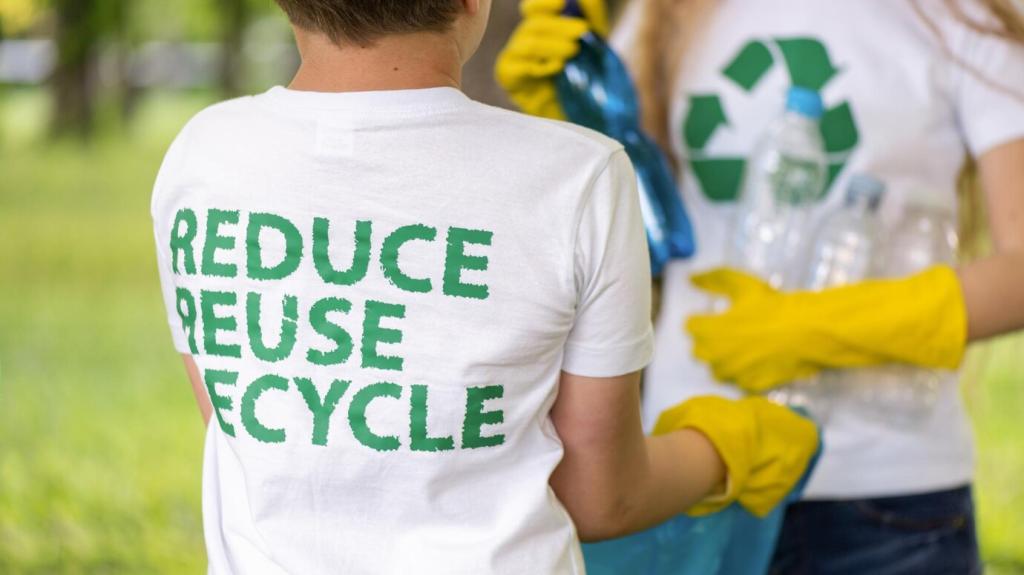Recycling and Waste Management Legislation: Your Practical Guide
Chosen theme: Recycling and Waste Management Legislation. Welcome to a friendly, plain‑spoken tour of the rules that shape cleaner neighborhoods, responsible businesses, and a thriving circular economy. Stay with us, share your questions in the comments, and subscribe for timely updates and action tips.
The Legal Landscape: From Local Ordinances to National Acts
Key Statutes You Should Know
Foundational frameworks such as the United States Resource Conservation and Recovery Act, the European Union Waste Framework Directive, and the Basel Convention guide how materials are handled, tracked, and traded. Knowing these helps decode local obligations and opportunities for better recycling.
How Rules Cascade Locally
National and regional laws often set targets, while counties and cities write the day to day rules for collection, contamination thresholds, and facility permits. That is why your neighbor’s bin guidelines might differ from yours across a municipal boundary.
Why Legislation Evolves
Recycling laws change with new materials, market disruptions, and climate goals. Packaging trends, e commerce, and export restrictions have pushed lawmakers to demand clearer labels, cleaner streams, and stronger data. Share what changes you want to see in your community.
Compliance for Businesses: Turning Obligations into Opportunity
Designing for Compliance and Recyclability
Producer responsibility and packaging laws increasingly reward simple, mono material designs and honest labeling. Choosing widely recyclable substrates, minimizing additives, and providing disposal instructions can cut fees, improve recovery rates, and delight environmentally minded customers who notice real effort.
Recordkeeping and Reporting Without Tears
Maintain a clean chain of custody with vendor certifications, bale quality photos, and weight tickets. A simple dashboard tracking materials purchased, diverted, and disposed reduces audit stress. Schedule quarterly reviews, and invite staff to flag data gaps before regulators or buyers do.
A Small Manufacturer’s Story
A family print shop feared new packaging rules until they mapped materials and switched to a recyclable mailer with water based inks. They cut disposal fees, met labeling requirements, and won a contract with a client demanding verified recycling performance and transparent reporting.
Rights and Responsibilities for Citizens
Most ordinances define what belongs in each bin, how clean items should be, and when to set them out. Following posted lists and rinsing containers prevents costly contamination. If guidelines feel unclear, request clearer communication from your hauler and share that feedback publicly.
Rights and Responsibilities for Citizens
Bottle deposits and electronics take back laws return value to you while keeping materials in circulation. Save receipts, know drop off locations, and claim refunds. If programs are missing in your area, ask local representatives to explore proven deposit return systems and collection partnerships.

Global Perspectives and Case Studies
Under VerpackG, producers must register, license packaging, and finance recovery through dual systems. Transparent databases and eco modulated fees push better design. The result is strong collection rates and clearer accountability that many regions now study when updating local rules and targets.

Global Perspectives and Case Studies
Japan requires consumers and retailers to route appliances into specialized take back channels. Manufacturers recover copper, plastics, and precious metals efficiently. Though consumers pay a fee, trust grows because processes are visible and results are published. Consider how similar transparency could build confidence locally.
Enforcement, Penalties, and Practical Avoidance
How Inspections Work
Inspectors typically review manifests, signage, storage areas, and outbound bales, checking contamination, safety, and vendor qualifications. Cooperative attitudes matter. Prepare by training staff, keeping clear labels, and documenting corrective actions quickly so small issues never become reportable violations or expensive escalations.
Common Pitfalls and How to Avoid Them
Frequent problems include missing container labels, inconsistent weighing, and unverified downstream vendors. Create a simple checklist, assign ownership, and review monthly. Ask suppliers for certificates and photos. Invite your hauler to a walkthrough and request written recommendations that you can implement and track together.
When Things Go Wrong
One retailer received a warning for contaminated cardboard. They installed baler signage, trained night staff, and arranged weekly spot checks with the hauler. Contamination fell dramatically, costs dropped, and the warning closed without fines. Share your own turnaround stories to inspire others.

The Future: Circular Economy Laws on the Horizon
Next generation programs layer digital product passports and eco modulated fees. Brands that simplify materials and disclose composition can lower costs and unlock better recovery. Start mapping your products now, so when requirements land, your documentation is already organized and easily verifiable.
